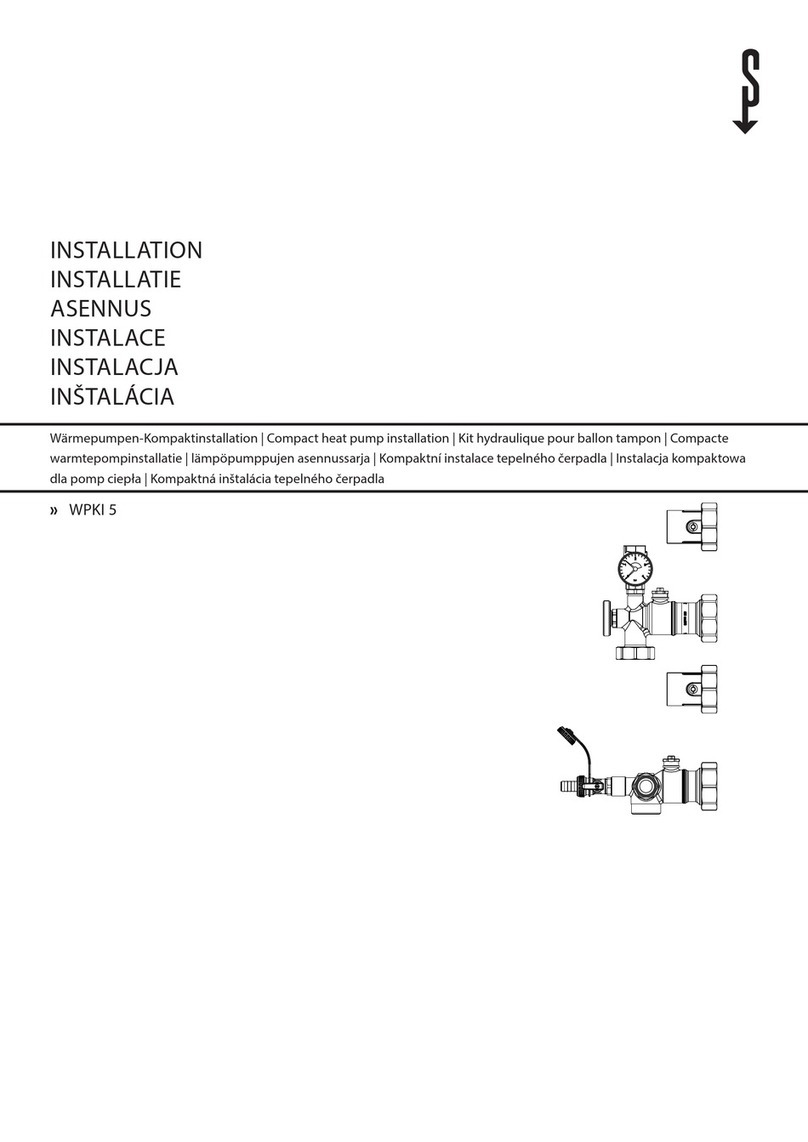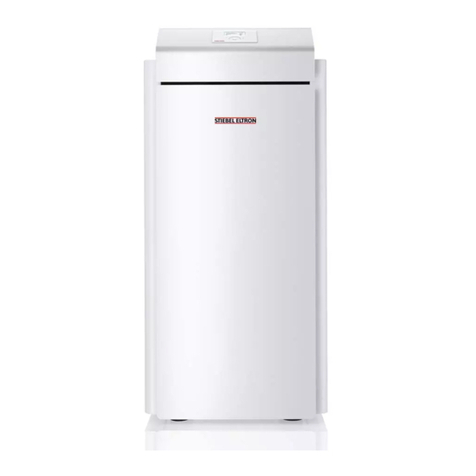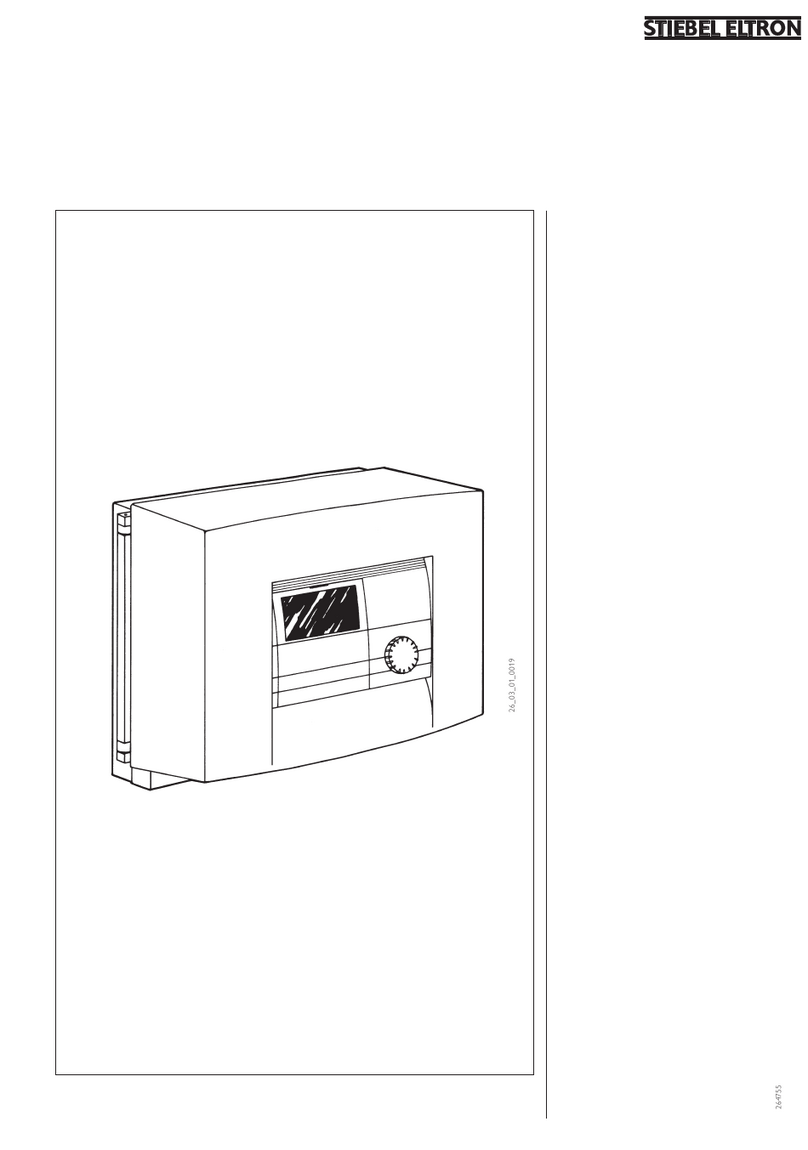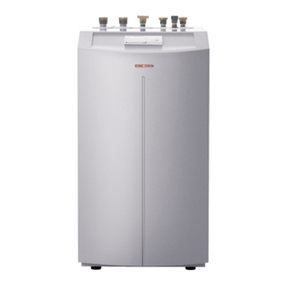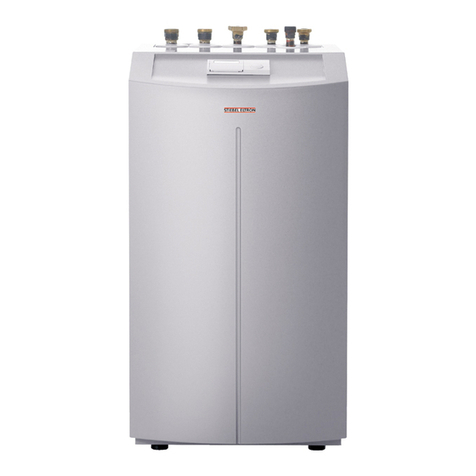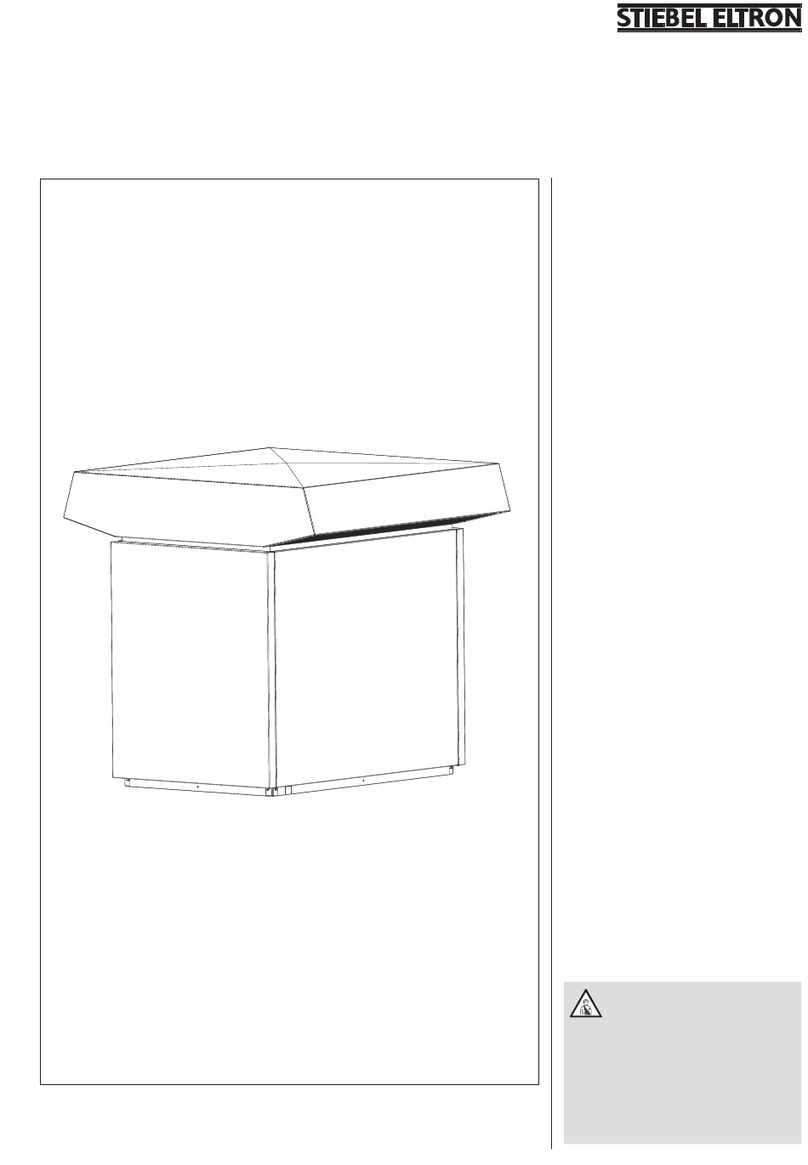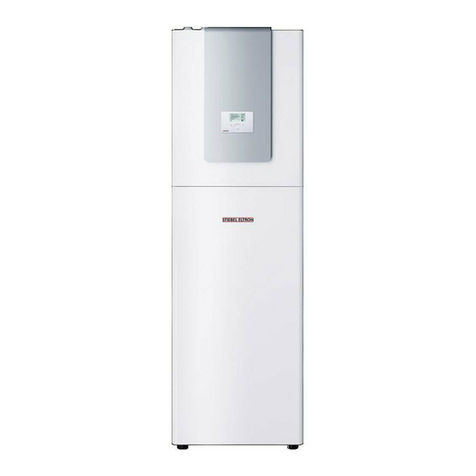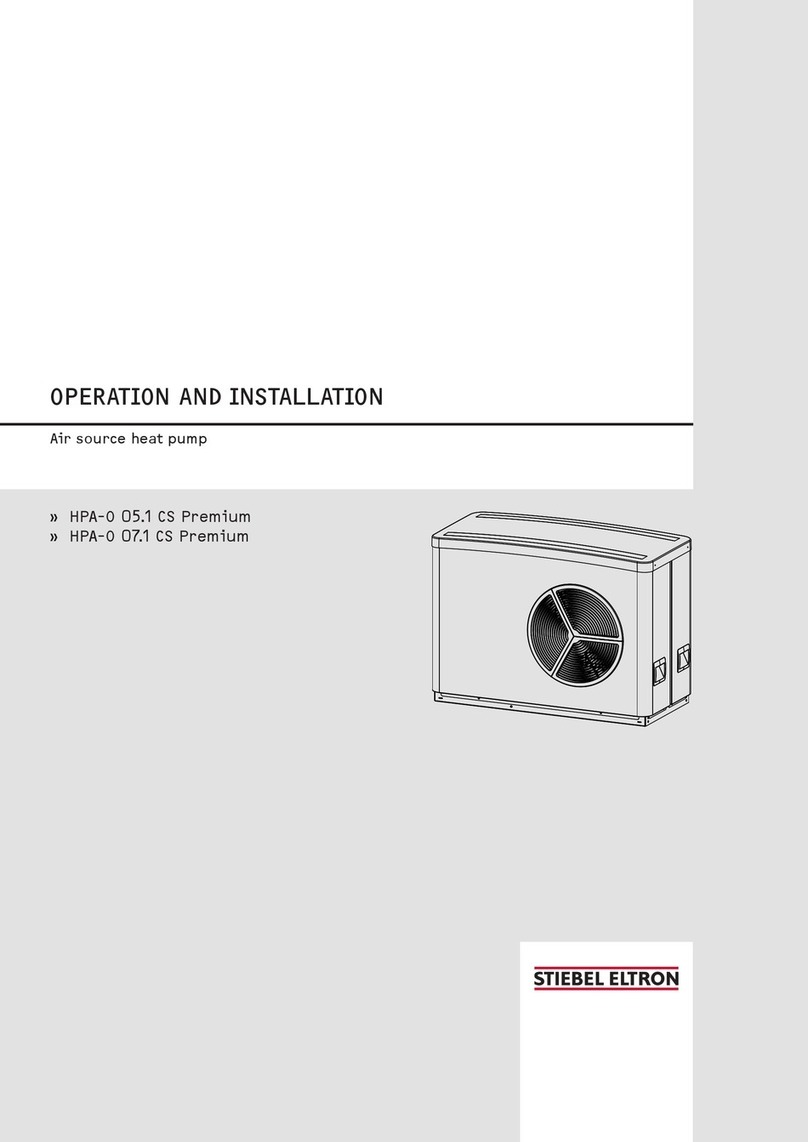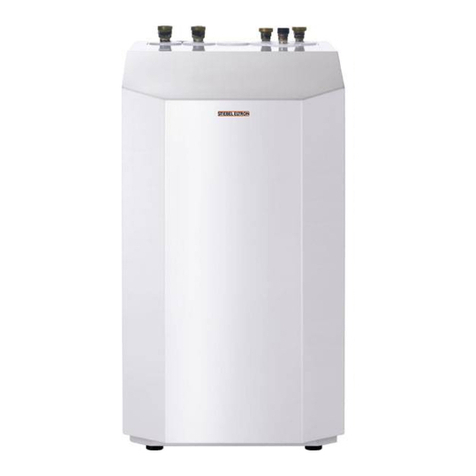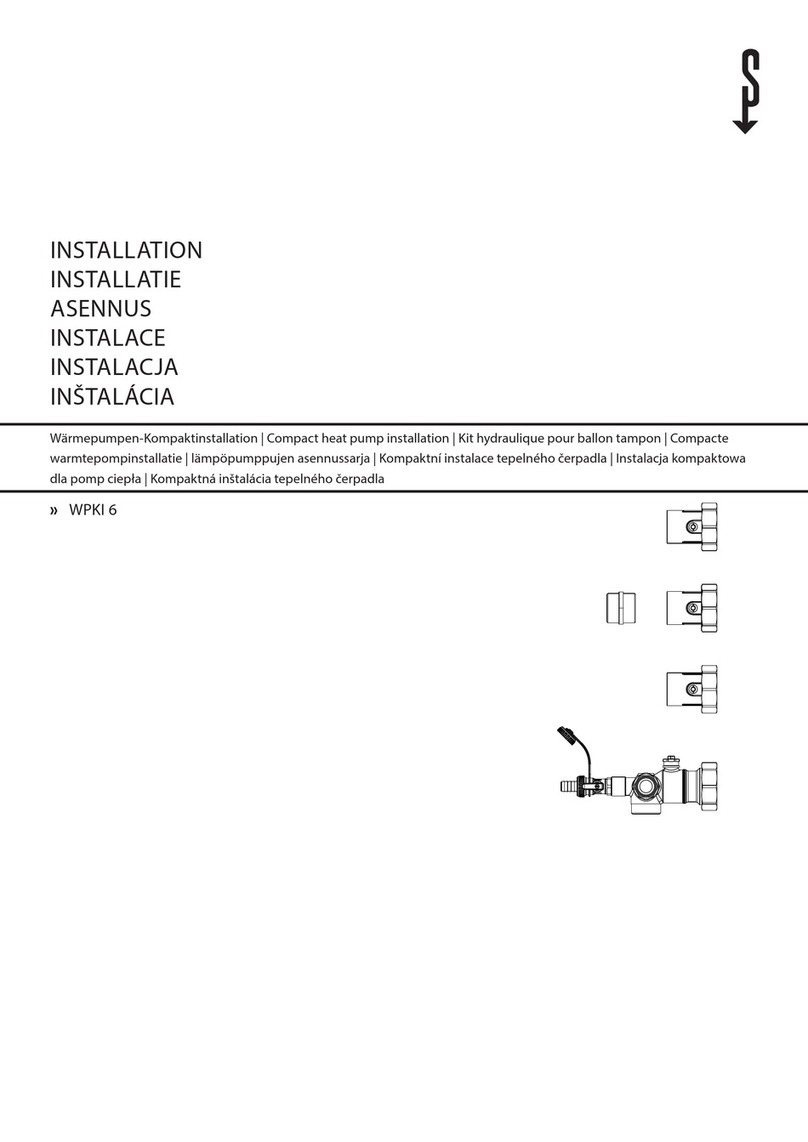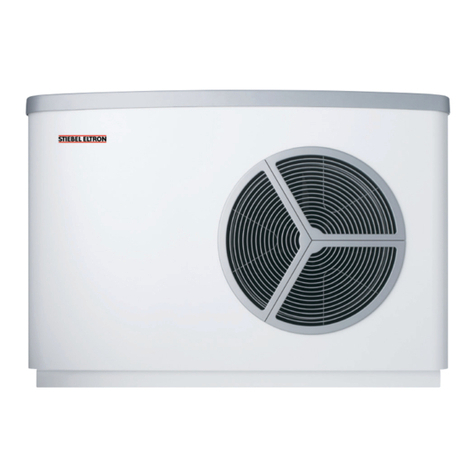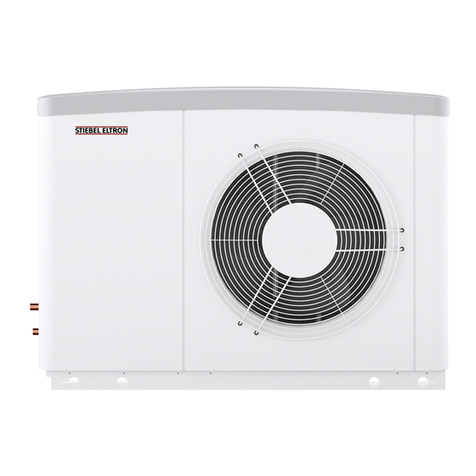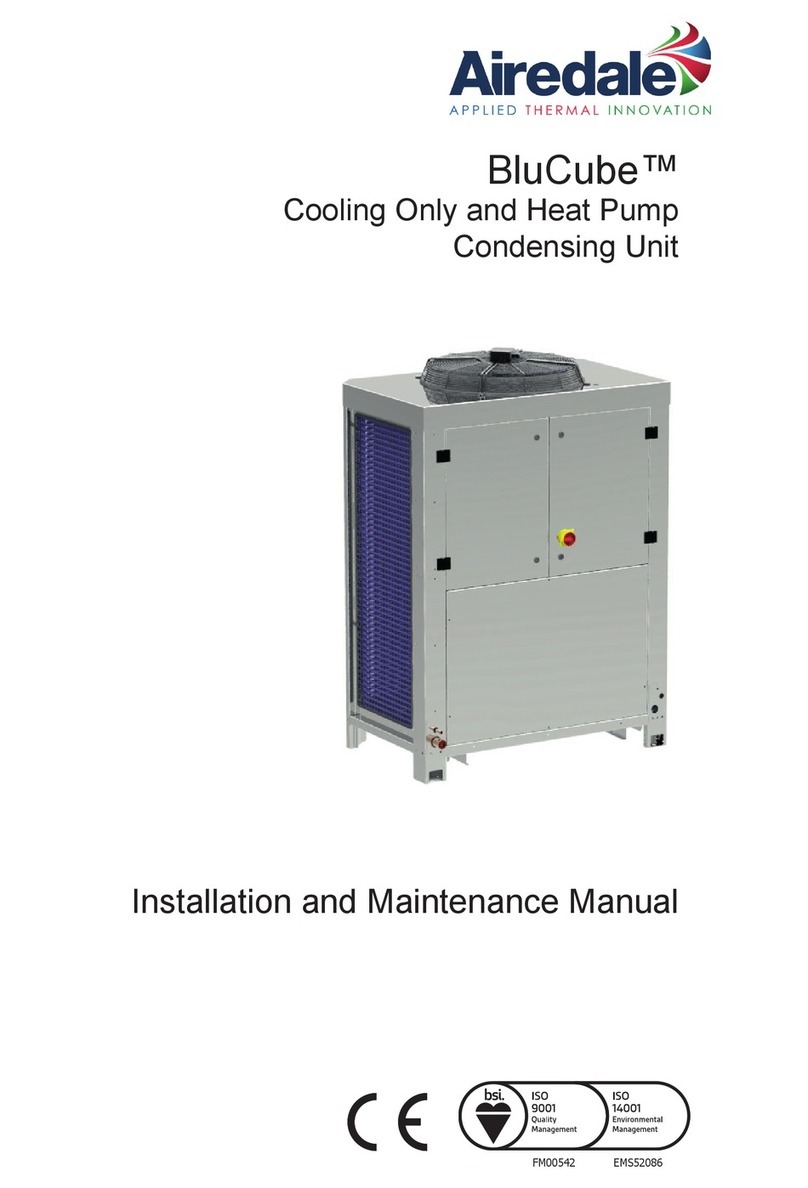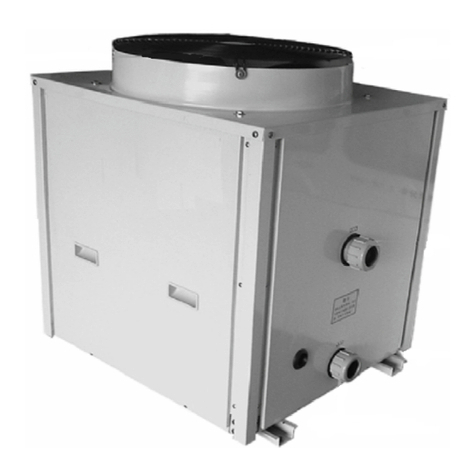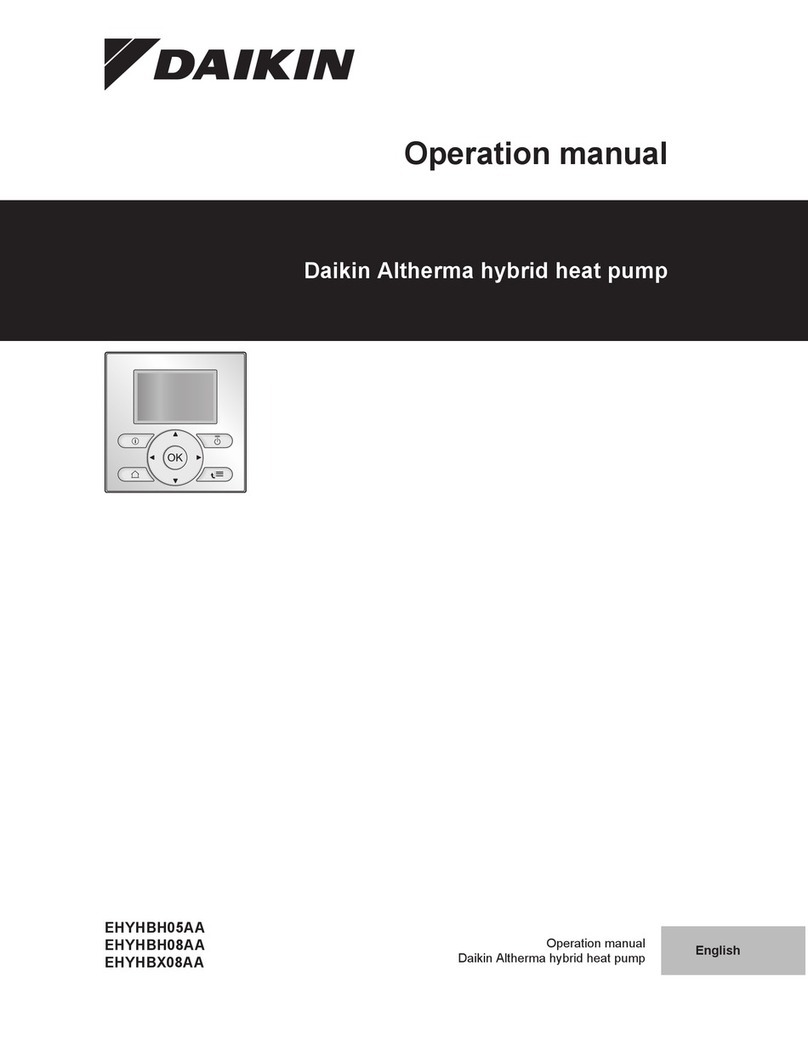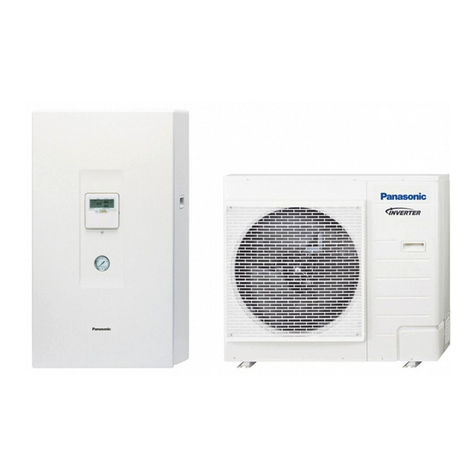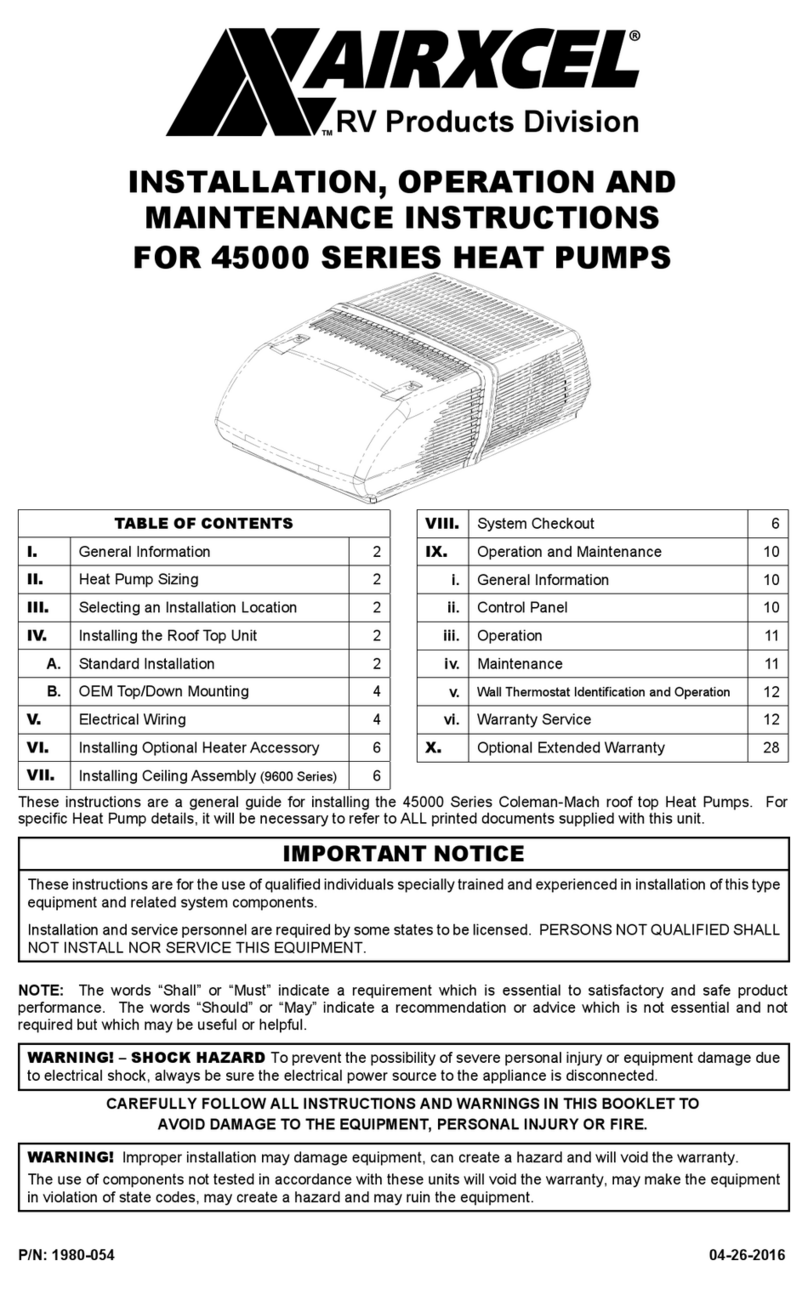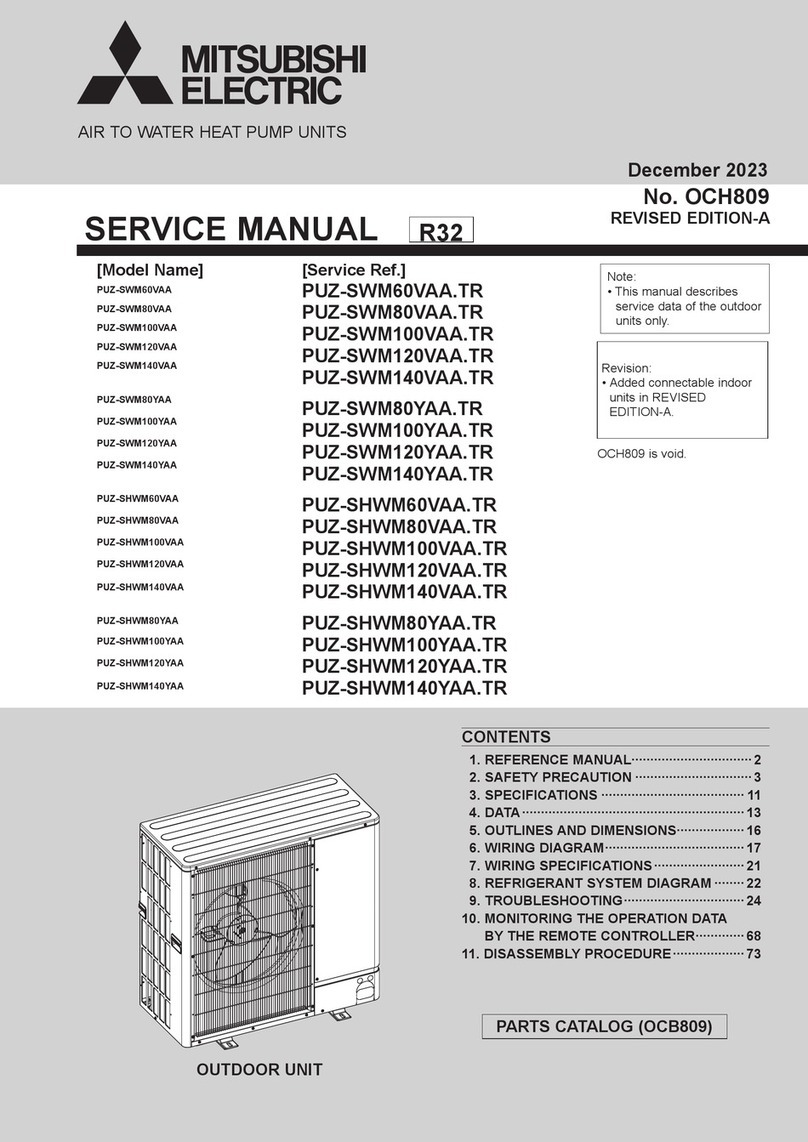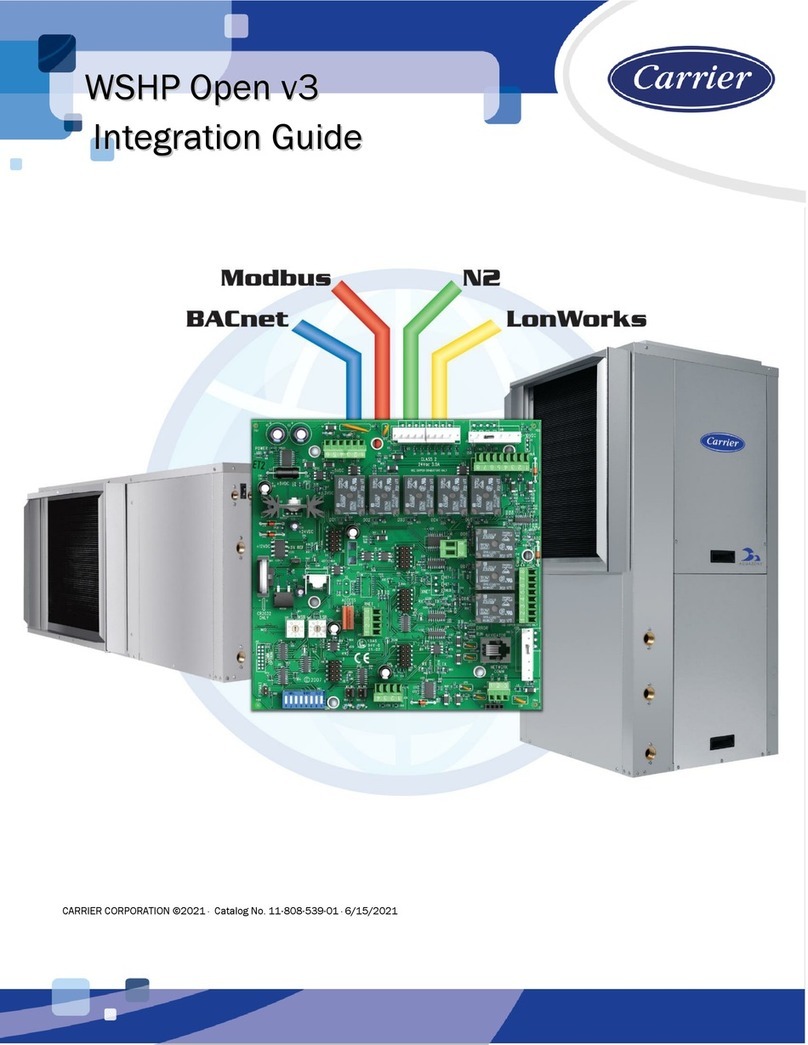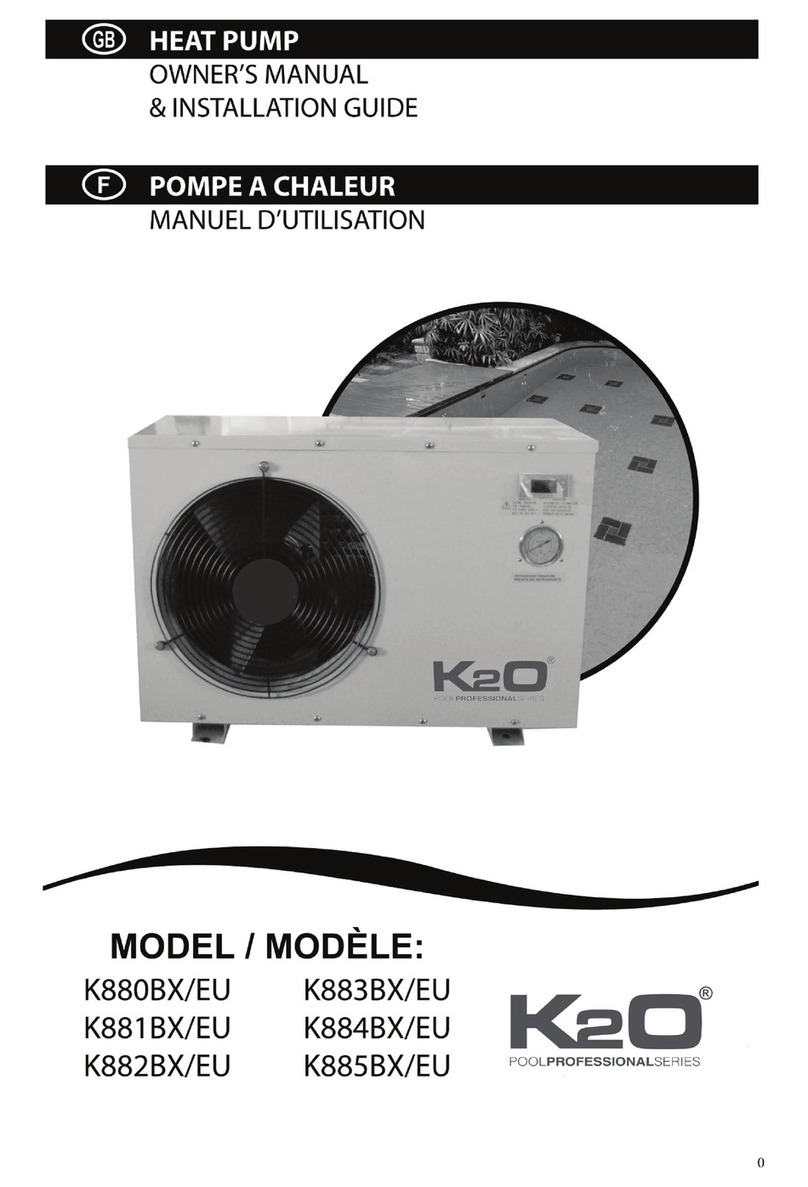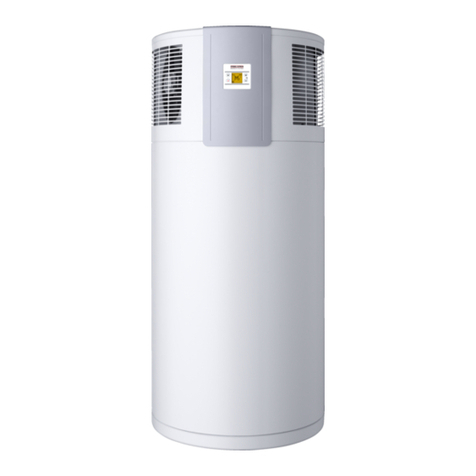
OPERATION
Appliance description
6| WWK 220-300 electronic www.stiebel-eltron.com
3. Appliance description
The appliance is designed for indoor installation. The appliance
operates in recirculation air mode and does not require outdoor
air. The appliance extracts heat from the ambient air. This heat is
used to heat up the water in the DHW cylinder with added electric
power. The amount of electric energy and time required to heat-up
the DHW depend on the temperature of the induced air.
This heat extraction results in a drop in the ambient tempera-
ture inside the installation room by between 1°Cand3°C. The
appliance also extracts moisture from the air, which turns into
condensate. The condensate is removed from the appliance via
the condensate drain.
When a hot water draw-off point is opened, the hot DHW is pushed
out of the appliance by the inflow of cold water.
To protect against corrosion, the DHW cylinder is coated inter-
nally with special enamel and is additionally equipped with an
impressed current anode.
The electronic control unit makes energy saving adjustments easi-
er. Subject to the power supply and your usage pattern, the water
is heated up automatically to the set temperature.
Heat pump operating principle
A closed circuit within the appliance contains refrigerant (see
"Specification/ Data table"). This refrigerant evaporates at low
temperatures.
In the evaporator, which extracts heat from the air, the refrigerant
changes from a liquid into a gaseous state. A compressor draws
in the gaseous refrigerant and compresses it. This increase in
pressure raises the refrigerant temperature.
That requires electrical energy. The energy (motor heat) is not
lost, but reaches the downstream condenser together with the
compressed refrigerant. There, the refrigerant indirectly transfers
heat to the DHW cylinder. An expansion valve then reduces the
still prevalent pressure and the cycle starts again.
!
Material losses
If you disconnect the appliance from the power supply, it
is no longer protected against frost or corrosion.
Do not interrupt the power supply to the appliance.
Note
Following an interruption of the power supply, the
compressor operation remains blocked for at least one
minute. The PCB delays electronic starting by a minute,
during which the appliance goes through its initialising
process.
If the compressor subsequently fails to start, it may be
blocked by additional safety devices (Klixon and high
pressure switch). This block should lift after 1 to 10min-
utes.
After the power supply has been re-established, the ap-
pliance continues to operate with the parameters that
were selected before the power supply was interrupted.
3.1 Heating the DHW cylinder
2
D0000050335
1 Domed sensor
2 Integral sensor
The appliance is equipped with two temperature sensors.
- The domed sensor captures the water temperature in the
upper section of the cylinder.
- The integral sensor is a temperature sensor affixed over the
entire cylinder height. The integral sensor determines the
average cylinder temperature.
The appliance display indicates the temperature in the upper sec-
tion of the cylinder. The appliance control unit operates with the
average cylinder temperature.
The appliance may well start to heat even though the display
would indicate that it has reached the set temperature. In this
case the deviation of the average cylinder temperature from the
set value is greater than the start hysteresis.
For information on the heat-up time, see chapter "Specification".
The calculation of the available amount of mixed water is based
on the average cylinder temperature. The amount of mixed water
is only calculated if the water temperature in the upper section of
the cylinder is higher than 40 °C.
DHW is normally heated by the heat pump of the appliance within
the application limits (see chapter "Specification/ Data table").
Electric emergency/booster heater
Heat pump operation will be interrupted if the application lim-
its are exceeded or undershot in heat pump mode. The electric
emergency/booster heater takes over the DHW heating with the
selected set temperature. Once the appliance is back within the
application limits, the electric emergency/booster heater switches
off and DHW heating continues with the heat pump.
In emergencies you can start the electric emergency/booster heat-
er should the appliance have developed a fault and the fault code
is higher than 256. See chapter "Operation/ Rapid heating key/
Emergency heating mode".
In the event of an unexpectedly high hot water demand, the emer-
gency/booster heater can be activated with the rapid heating key
in addition to the heat pump. See chapter "Operation/ Rapid
heating key/ Rapid/comfort heating".
314104-38523-9034_WWK_220-300_electronic_en_pl.indb 6 24.02.2015 10:33:21




















